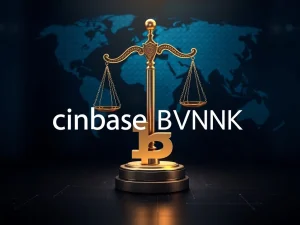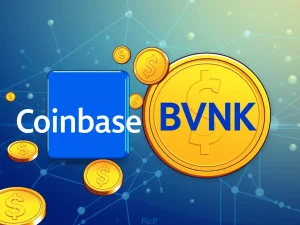Ripple’s Ambitious Acquisition Strategy: Echoes of a SoftBank Playbook?

Are you curious about how major players in the crypto space are building their empires? Let’s dive into Ripple’s recent moves and analyze their strategy. The question is whether Ripple is adopting a SoftBank-style acquisition strategy to expand its influence.
Is Ripple Following a SoftBank-like Acquisition Strategy?
Ripple has been actively acquiring companies, aiming to control crucial transaction infrastructure and direct flows through its native asset, XRP, and its upcoming stablecoin, Ripple USD (RLUSD). This approach has drawn comparisons to the aggressive investment and acquisition strategy employed by the Japanese firm, SoftBank.
A key recent example is the $1.25 billion acquisition of Hidden Road, a prime brokerage firm, on April 8th. This deal enables Ripple to integrate RLUSD as collateral within Hidden Road’s products. Furthermore, Hidden Road plans to move its post-trade operations onto the XRP Ledger, the blockchain powering XRP and Ripple’s institutional services.
Austin King, CEO of Omni Network and founder of Strata Labs (acquired by Ripple in 2019), sees Ripple’s method as a “SoftBank-type” approach. Unlike companies that focus heavily on internal development, SoftBank grew through significant investments, joint ventures, and acquisitions. Ripple appears to be pursuing a similar playbook focused on financial services, but not everyone agrees the comparison fits perfectly.
Understanding the SoftBank Model and Ripple’s Approach
SoftBank gained global recognition with early investments in companies like Yahoo and, famously, its massive bet on Alibaba. SoftBank recycled these returns into further investments, building a vast ecosystem across various industries like telecom (Sprint) and semiconductors (ARM).
King notes that SoftBank created synergies across its portfolio companies. He believes Ripple is applying a similar strategy within the financial services sector, powered not by venture capital gains, but by its holdings of XRP.
Similarities Between Ripple and SoftBank’s Strategy:
- Infrastructure Acquisition: Both companies tend to buy existing infrastructure rather than building everything from scratch.
- Ecosystem Building: They treat their portfolio companies as interconnected parts of a larger ecosystem, not isolated investments.
- Capital Leverage: Both rely on significant capital. SoftBank used its Vision Fund, while Ripple has a substantial war chest of XRP and cash. As of March 31, Ripple held 4.56 billion XRP (worth billions) and another 37.13 billion XRP in escrow.
Ripple uses its assets to acquire infrastructure, which in turn is intended to increase usage of those assets (XRP and RLUSD). This creates what some describe as a token-fueled flywheel effect.
How Acquisitions Expand Ripple’s Footprint for XRP and Stablecoins
Ripple’s acquisitions are designed to embed XRP and RLUSD into traditional finance workflows like custody, brokerage, and payments. Sid Powell, co-founder and CEO of Maple, explains, “With a full-stack infrastructure, Ripple can embed XRP as the native bridge asset between networks, custodians, and tokenized assets. Meanwhile, RLUSD can provide a regulated, USD-pegged unit of account that institutions want.”
However, skeptics like Powell and Casper Johansen, co-founder of Spartan Group, point out differences. Powell sees SoftBank as a broader conglomerate, while Ripple is more focused on payment and blockchain-related products. Johansen feels the comparison is “a bit stretched,” noting SoftBank’s focus on turning around operating businesses and taking minority stakes for large exits.
Ripple Joins the Crypto M&A Wave
Instead of diverse sectors like telecom or chips, Ripple is assembling a financial infrastructure stack for crypto and traditional assets. Recent acquisitions include custody firms Metaco (2023) and Standard Custody (2024). Hidden Road adds over 300 institutional clients handling trillions in annual clearing volume.
Johansen highlights that Metaco provides the secure storage foundation, while Hidden Road allows Ripple to use its significant capital to boost the prime brokerage business, where access to large capital is crucial for growth and competition.
Ripple’s moves are part of a broader M&A trend among US crypto firms, coinciding with a potentially improving regulatory environment. After years facing legal challenges and limited banking access, companies like Ripple are seeing a clearer path to scale. Ripple CEO Brad Garlinghouse has expressed optimism about a more constructive stance from regulators, following Ripple’s own settlement with the SEC.
Ripple’s Focus on Stablecoins and Future Plans
Garlinghouse has indicated that Ripple plans to continue exploring acquisitions. Potential targets could include large-scale point-of-sale companies to move into consumer payments, according to King. Reports also surfaced about Ripple making a multi-billion dollar bid for stablecoin issuer Circle, though it was reportedly rejected.
This highlights Ripple’s strong interest in the stablecoin market. King predicts that banks will increasingly adopt stablecoins, reshaping US finance.
Despite the strategic vision, challenges remain. Hadley Stern, Chief Commercial Officer at Marinade, notes that institutional use of volatile XRP for core settlement is still limited. RLUSD is promising but faces strong competition from established players like USDC and PayPal USD. Regulatory clarity for stablecoins in the US is also still pending.
Summary: Is the Playbook Working?
Ripple is clearly executing an ambitious strategy using its substantial assets to acquire key financial infrastructure. The goal is to integrate XRP and RLUSD deeply into institutional workflows, potentially creating a self-reinforcing cycle of adoption and value. While the comparison to SoftBank has merit in its focus on external growth and ecosystem building, Ripple’s strategy is more narrowly focused on the financial sector and leverages its specific crypto assets. The success of this strategy will depend on overcoming regulatory hurdles, competing with established players, and driving widespread adoption of XRP and RLUSD within the acquired ecosystems.







